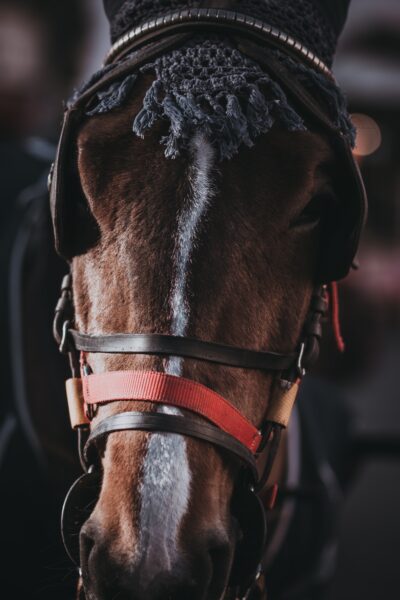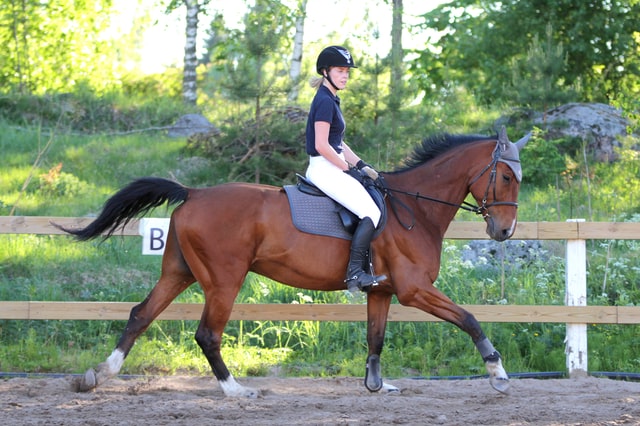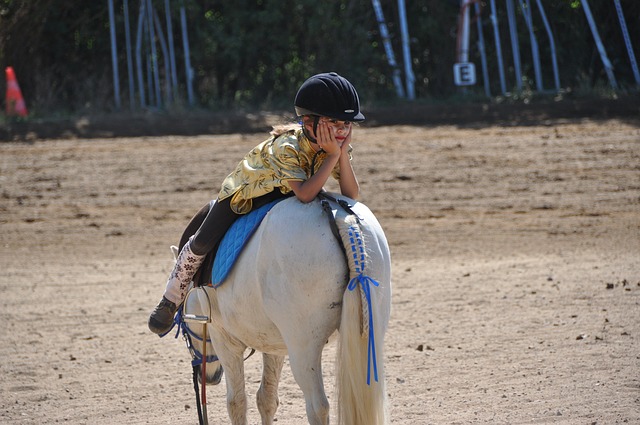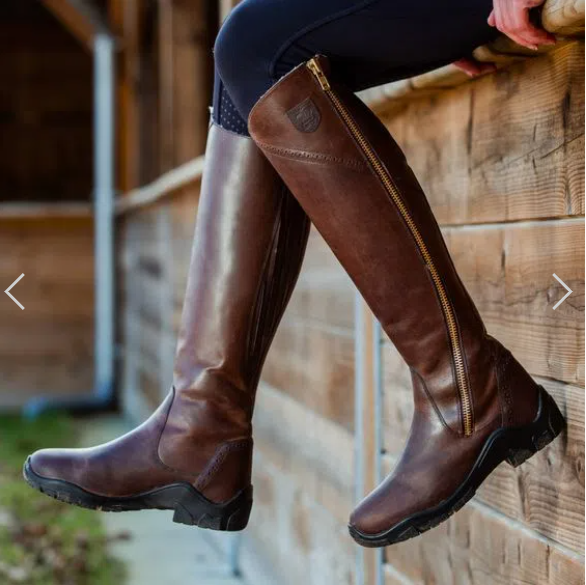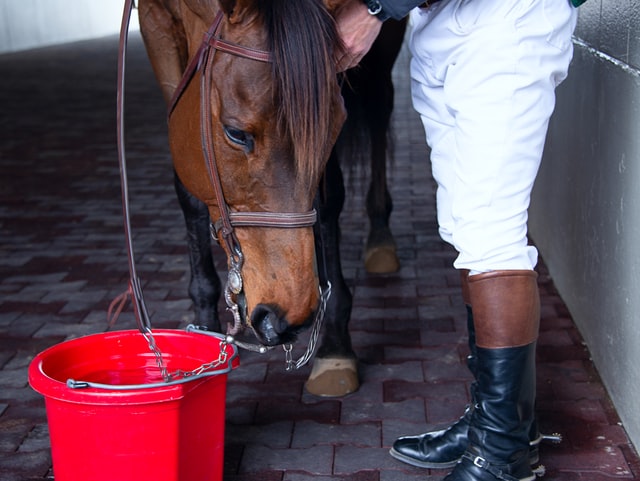Parts of a Horse Saddle
If you’ve just started riding or want to study up on the sport, learning the parts of a horse saddle will help you understand your trainer and be able to talk the talk.
Just how we talked about in our post of 200+ beginner horse terms you need to know learning the language and terms around a sport is like assigning street names to a road map.
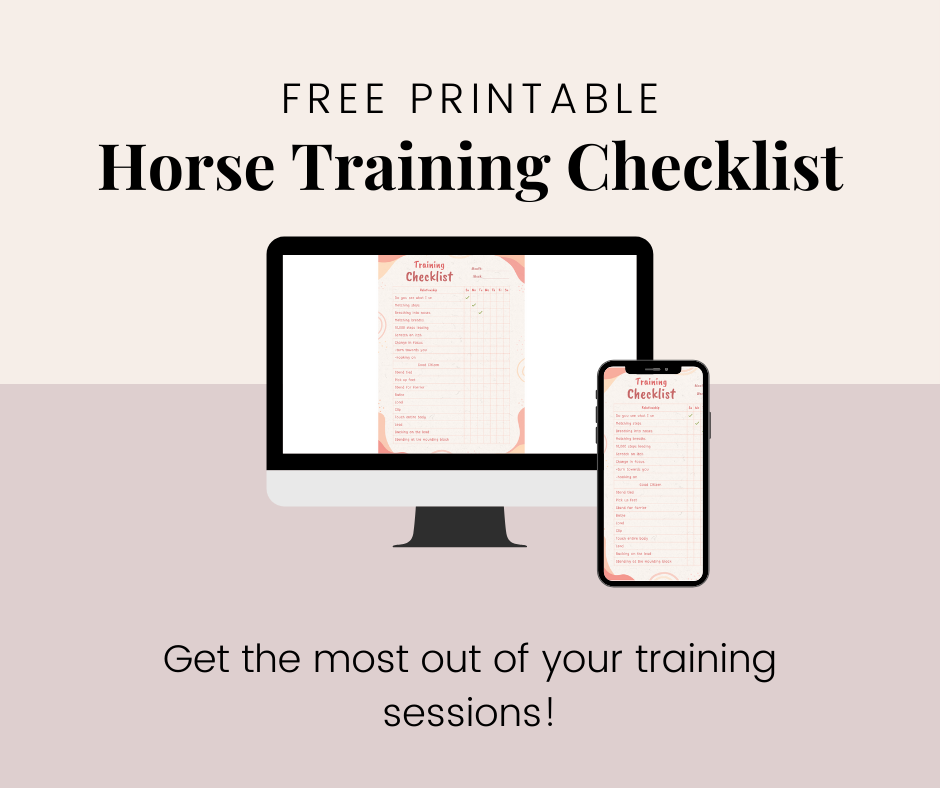
Being able to understand your trainer, or a book you’re reading, or a YouTube video discussing a saddle is the start of being able to speak this unique language of equestrian.
Understanding the parts of the saddle and subsequently being able to discuss the various parts is an essential part of your foundation of riding.
Saddles work to provide additional support to the rider and to ensure the horse’s comfort.
A horse saddle pads a rider’s seat on the horse’s back where the pressure points are.
Just like a unique horse, every saddle is different.
Different measures have to be taken into account.
The fit of a saddle varies from one horse to another.
Saddles can be used for different purposes, too.
These could be seen in the different lengths and angles of the flaps and the shape of the saddle.
Some saddles also have a deeper seat which could be ideal for sports that require a deep seat such as reining, dressage or bull fighting.
Most saddles fall into one of two categories of tack that is used for different disciplines: English and Western.
English disciplines are those that come from England such as jumping, dressage, and eventing.
Western disciplines are those that originated with the Western Cowboys of the United States such as roping, reining, and Western pleasure.
The distribution of a person’s weight is different when on a horse than when you’re standing.
Historically speaking, the first saddle only had two parts—a blanket and a girth.
Now, there are different parts of a saddle and every part has a different purpose that plays an important role to keep the comfort of both the horse and the rider.
Parts of a Horse Saddle
Pommel
The first part of the saddle that we will be discussing is the Pommel.
In simple terms, this is the front of the saddle.
The front of your saddle usually passes through the top of the withers and slopes upward to provide a perfectly positioned rider’s seat.
Both Western and English saddles identify the front of the saddle as the pommel, however some Western saddles will also have a horn.
Seat
The second is the seat of a saddle.
This part of the saddle obviously provides the rider a seat.
The seat is usually wider than the pommel.
Most saddle makers make the seats differently, which will be discussed later.
Western saddles usually have a deep seat that provides stability and helps the rider to maintain their seat.
English saddles can have both deep seats for stability or shallow ones for those sports where the rider lifts in the stirrups such as jumping and racing.
The stirrup leathers and the girth straps are also attached to this part of the saddle.
Tree
The saddle tree is the foundation of the saddle.
The different pieces of the saddle are all connected to this tree.
It is also part of this understanding that you realize that a poor quality tree means a poor quality saddle, too.
It is in the tree where the fit of the saddle is determined, how the rider’s weight will be distributed, and how the balance of the rider goes.
Every tree has a ground seat attached to it which is curved and sloped to match the tilt of the rider.
An English saddle covers less surface area than a Western saddle and is sometimes reinforced with stainless steel.
The tree is usually pointed so that the saddle bars do not interfere with the shoulder blades, allowing more movement for the horse.
There are cheap saddles that are made from fiberglass trees that don’t usually last for a long time.
Plastic trees made with synthetic materials like this are usually lighter and more durable.
Cantle
The cantle is the back of the saddle. How the rear of the saddle is usually raised.
The back of the seat serves as a backrest and provides sturdiness to the tree.
It is always higher than the pommel and is a bit broader than the seat.
The cantle also serves as the bars of the tree.
Cantles can have different heights. A high cantle offers more protection and helps the rider sit with a proper posture.
While a high cantle might be ideal, most riders prefer a saddle with a lower cantle.
Skirt
The skirt is found under the tree.
It is usually made of leather and sheepskin.
The general purpose of the skirt is to prevent the bars of the tree from coming in contact with the horse’s back.
Sides of the Saddles
The sides of the saddles have certain parts, too that help make the ride more comfortable.
These are the fenders, the stirrups, and the strings.
The fenders are usually made of leather.
These multifunctional pieces connect the tree at the top and hold the stirrup below.
It prevents the lower leg of the rider to hit the side of the horse.
The stirrups are attached to the bottom part of the fenders.
The stirrups are used for a rider to step on when he gets on or off the horse, sitting on the horse, and maintain balance.
The strings are usually made up of leather, too, and are attached to the pommel and the back.
Though it is not used anymore nowadays, some saddles still have them.
These parts of a Western saddle are not usually seen on a normal horse saddle.
Straps
In Western saddles, straps are used to secure the saddle to the horse.
The cinch is usually a leather strap that is placed behind the horse’s forelegs.
Using a cinch, the saddle is safely fastened into the horse.
The rear cinch.
Since the saddle doesn’t shift forward during movements, the rear cinch keeps your saddle tight and even to your horse’s chest, relieving strain on the withers.
The front cinch helps keep safety, too by attaching to the rear inch.
The latigo is a leather strap that is used to make sure that the front cinch of the horse is firmly attached.
The latigo keeper is usually a small tab that has a horizontal slit that holds the latigo in place.
Horn
The saddle horn is a unique part of a Western saddle.
One end of the rope is used to secure itself, while the other is on a cow or anything that is being tugged.
Knee Rolls
Knee rolls are usually seen on English saddles and are placed on the front flaps to add extra padding to help keep the rider’s leg in place.
Saddle panels, lining, or cushioning are added to the underside of the saddle to add comfort and security.
Grab Strap and Croup Strap
The purpose of a grab strap is to give a rider something to grab on while trying to stabilize their hands.
They are seen on dressage saddles but also do a great job in teaching new riders the basics of riding.
Dressage saddles have a shorter girth as compared to the usual girths of horse saddles.
Croup straps connect the cantle to the horse’s tail.
They are usually seen on ponies and help prevent the saddle from sliding up their necks.
Breast Collars
Although this is not a part of the saddles, breast collars are pretty important, too.
They keep the saddle from sliding off the horse’s spine.
These could be an important part of barrel racing saddles and when going trail riding.
Types of Horse Riding Saddles
One type of horse riding saddle is saddles that have flat seats.
These kinds of seats are used when a rider is about to join a jumping event.
When using flat seated saddles, riders have a close contact feel with the horse which is very important.
A treeless saddle, as the name implies, doesn’t have any tree.
It is designed to fit a variety of horses but lacks the support for the weight of the rider.
To enjoy a treeless saddle, an appropriate saddle pad should be used.
Most treeless saddles have a leather seat to ensure comfort even without the tree, which is an important saddle part.
A general-purpose saddle is ideal for beginners or intermediate horseback riders.
These saddles are used in riding schools as different riders use them and every rider is unique in their own way, which makes these saddles great for everyone’s use.
These are just some of the different types of Western saddles.
There are more types of saddles, and every type works well for its own sport.
There are leather saddles, show saddles, and saddles used for the saddle seat competition.
If you are thinking about buying a new saddle, consider buying a right-fitted saddle.
The proper saddle fits both the rider and the horse.
Every horse-rider pair is a perfect duo, and finding the right size saddle could be an important aspect to this chemistry.
The best fit will always keep you comfortable and easy while on your horse’s back.

Lauren is an internationally published author, trainer, and has helped hundreds of horse-rider combinations create lasting bonds and the success they desire. Check out Lauren’s incredible story: From horse-crazy girl to international equine educator. Or if you want to send Lauren a quick message, check out her contact page here.
